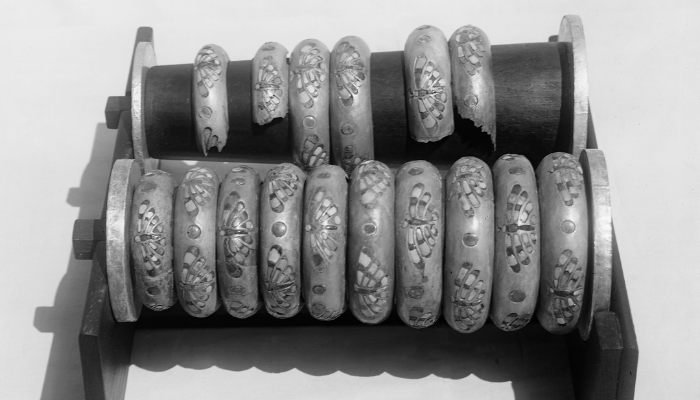Analysis of queen Hetepheres’ silver bracelets reveals ancient trade networks
Macquarie University researchers have led the analysis of bracelets found in the tomb of queen Hetepheres I – the largest and most famous collection of silver artefacts from early Egypt. It is the first analysis of the collection in decades. The analysis has been published in the Journal of Archaeological Science: Reports.
Dating to around 2600 BC, queen Hetepheres I was one of Egypt’s most important queens: the wife of 4th Dynasty King Sneferu and mother of Khufu, the greatest builders of the Old Kingdom, including the Great Pyramid at Giza.

Analysis of samples taken from the bracelets found they were primarily made from silver with minor traces of copper, gold and lead. The thin metal worked into a crescent shape and the use of turquoise, lapis lazuli and carnelian inlay, stylistically mark the bracelets as made in Egypt. Although Egypt was rich in gold, it had no local sources of silver, and the metal was most likely imported from mines in the Cyclades (Aegean islands, Greece).
“The origin of silver used for artefacts during the third millennium has remained a mystery until now,” said Dr Karin Sowada, from the Department of History and Archaeology at Macquarie University. “This new finding demonstrates, for the first time, the potential geographical extent of trade networks used by the Egyptian state during the early Old Kingdom at the height of the Pyramid-building age.”
The silver was likely acquired through the port of Byblos on the Lebanese coast and is the earliest attestation of long-distance exchange activity between Egypt and Greece.
The research team included leading scientists from France and the Museum of Fine Arts in Boston, where several bracelets are located. Their analysis also revealed the methods of early Egyptian silver working for the first time.
“Samples were analysed from the collection in the Museum of Fine Arts in Boston, and the scanning electron microscope images show that the bracelets were made by hammering cold-worked metal with frequent annealing to prevent breakage,” said Professor Damian Gore from Macquarie University’s School of Natural Sciences.
“The bracelets were also likely to have been alloyed with gold to improve their appearance and ability to be shaped during manufacture.”
The tomb of queen Hetepheres I in Giza was discovered in 1925. The bracelets were first examined many decades ago, yet the origin of the metal and the metallurgical techniques were not able to be determined at the time. Since then, the bracelets have not been analysed. This research presents new images and lead isotope analyses to help determine the metal composition, geographical location of the metal source and method of manufacture.
“The rarity of these objects is threefold: surviving royal burial deposits from this period are rare; only small quantities of silver survived in the archaeological record until the Middle Bronze Age (c. 1900 BC); and Egypt lacks substantive silver ore deposits,” said Dr Sowada.
The research presents new and detailed insights into the origins of the silver ore and helps expose the trade networks of Egypt’s great kings.
Bibliographic information:
2023, 103978, ISSN 2352-409X, DOI: https://doi.org/10.1016/j.jasrep.2023.103978.


